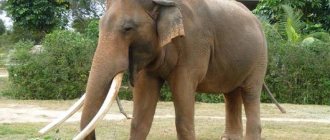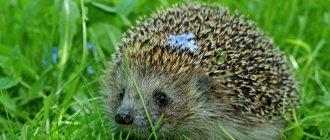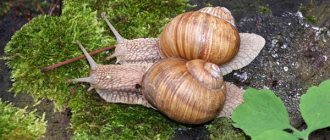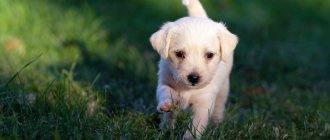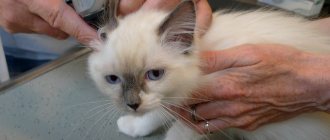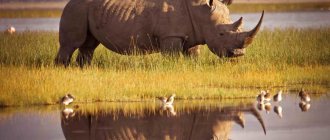The walrus (Odobenus rosmarus) is a marine mammal, the only representative of the walrus family.
These large pinnipeds with thick, wrinkled skin may not be the most attractive creatures in the animal kingdom in appearance, but if you get to know them better, they evoke sincere sympathy. These are highly social animals with a developed sense of mutual assistance: in case of danger, they fiercely protect their cubs and brothers from any, even the most dangerous enemy. The indigenous population of the Arctic has always revered walruses and attributed to them many human qualities.
The closest living relatives of walruses are eared seals: their common ancestors were bear-like animals Enaliarctidae, living in the North Pacific Ocean about 20 million years ago. 5-10 million years ago, ancient walruses were the most numerous and widespread pinnipeds in the Pacific Ocean. They looked like modern sea lions. Some of them penetrated into the North Atlantic and spread widely in the Atlantic Ocean.
Today, walruses are inhabitants of the Arctic seas from Canada and Greenland to northern Eurasia and western Alaska. Their main habitats are open water and pack ice on the continental shelf.
What benefits do walruses bring?
Walruses have always been of great importance to the indigenous peoples of the Far North. The carcasses of killed walruses were used in full, providing residents of the northern coasts with protein-rich meat, skins for building houses and covering boats, and fat for heating and lighting. Walrus tusk served as a material for the manufacture of weapons, tools and decorative items.
Real seal: features
In addition to the already mentioned characteristics of the appearance of a real seal, it must be said about the short neck and the same tail, the first being inactive. Vibrissae are usually up to ten pieces, they are quite hard. It is the whiskers that help seals navigate in the water: they do not rely on vision, but with the help of their whiskers they catch obstacles and successfully overcome them. The front flippers of these animals are even shorter than the hind ones and are located closer to the head. The size and weight of a real seal ranges from one and a half to six and a half meters and from ninety to three and a half thousand kilograms.
Some species of seals do not have hair, but it is usually rough, not fluffy, and comes in a variety of colors. Seals are characterized by seasonal molting. Babies are born with thick, often white and very soft fur, which is replaced after three weeks. Pregnancy in females lasts from two hundred seventy to three hundred and fifty days, and reproduction (as well as molting) occurs on ice. The peculiarity of real seals is that mothers stop feeding their young with milk quite early, and for several weeks the babies feed only on accumulated fat reserves (since they themselves are not yet able to provide themselves with food). In general, real seals eat fish, crustaceans, and mollusks. Some species even hunt penguins.
Description of the sea giant
Walruses are the largest representatives of the order Pinnipedia (Pinnipedia). On average, females weigh 640-720 kg, males - 900-1120 kg, but there are individual individuals whose weight reaches 1750 kg. The body length of males is 3.1-3.2 m, females - 2.7 m. It must be said that the size and weight of animals vary depending on the season and habitat, reflecting interpopulation differences and the abundance of food in the area. The smallest walruses live in Hudson Bay.
The species is divided into 2 (3) subspecies:
1. Atlantic walrus (O. r. rosmarus)
It lives in the Canadian part of the Arctic up to the Barents Sea.
2. Pacific (O. r. divergens)
Found in the Bering and Chukchi Seas. This subspecies has the largest fangs: their length is on average 55 cm in males and 40 cm in females.
The Laptev walrus (O. r. laptevi) is sometimes distinguished separately.
The skin of young walruses is dark brown. Adults are light brown or reddish brown, with the chest and belly somewhat darker. The surfaces of the flippers are hairless and black in young animals, becoming brown and then gray over time.
The skin of sea giants is unusually dense and tough. Its thickness is 2-4 cm, and it gathers into folds at every joint and bend of the body. The skin protects the walrus from injuries from the fangs of relatives, as well as when diving onto hard ice or sharp stones.
Short, no more than 1 cm long, yellow-brown hair grows on the skin of young individuals throughout the body. Adult males are covered with sparse hair or are completely bald, and skin bumps form on their neck and shoulder blades. This knobby skin, up to 5 cm thick, is a distinctive feature of an adult male and provides additional protection from injury. Folds of skin can be a haven for bloodsuckers, causing a lot of anxiety to animals, which is why they often itch and scratch their skin.
In early descriptions, these pinnipeds were often compared to pigs, partly due to their habit of huddling and perching on top of each other, as well as their sparse hair and round body. Externally, the walrus is very similar to the sea lion, with the exception of a square head and long tusks.
Male walruses are endowed with a pair of air sacs in their throats that can become very inflated. These bags serve to produce special sounds during courtship, as well as to maintain buoyancy while resting on the water.
Nutrition
The main food of walruses is found on the seabed - these are elasmobranch mollusks. Sensitive whiskers on the animal's face help to detect their location. With its fangs, flippers, and muzzle, the animal rips up the muddy bottom, loosens the soil, raising clouds of shells.
With calloused flippers, he deftly rubs them so that the shell cracks and settles to the bottom. The animal swallows the bodies of mollusks along with water. Saturation comes when the volume of food is at least 50 kg. Loosening the soil has a positive effect on the bottom ecosystem - it creates favorable conditions for the development of organisms.
Interesting facts about the animal
Let's learn interesting facts about the sea unicorn:
- Since the 12th century, traders have sold the animal's tusks, passing them off as alicorns - the horns of the mythical unicorn. They were worth more than gold.
- The lifespan of a mammal in captivity is no more than 6 months.
- Thanks to thousands of nerve endings on the tusk, the animal is able to detect water pressure and temperature.
- A narwhal tusk is a modified tooth containing nerves. This part of the body is used as a receptor. Females have tusks that are not as large as those of the opposite sex.
- The narwhal uses its horn to force fish to the surface from the bottom.
- There are known cases of sea unicorns attacking whales. Most likely this was an accidental collision.
- The mammal does not have a fin on its back.
- A third of the animal’s total mass is fat, reaching a thickness of 10 cm.
- The narwhal will not be able to live in warm water.
- The largest tusk is 3 m long. It weighs about 10 kg.
- If the horn breaks, it will never grow back and will be sealed with a bone filling.
- According to an old belief, a piece of narwhal tusk in a glass of poisoned drink can change its color.
- Individuals are very talkative among themselves.
Freedom-loving narwhals do not tolerate captivity, so it is better to protect these amazing animals from a distance.
Atlantic walrus diet
The feeding process for representatives of the Atlantic walrus subspecies is almost constant. The basis of their diet is bottom mollusks, which are very easily caught by pinnipeds. Walruses, with the help of their long and rather powerful tusks, stir up the muddy bottom of the reservoir, resulting in the water being filled with hundreds of small shells.
The collected shells are grabbed by the walrus with its flippers, after which they are rubbed using very powerful movements. The remaining fragments of shells fall to the bottom, and the mollusks themselves remain floating on the water surface. They are the ones that are actively eaten by walruses. Various crustaceans and worms are also used for food purposes.
This is interesting!
Walruses need a rich diet to support the vital functions of the body, as well as to build up a sufficient amount of subcutaneous fat, which is important for protection from hypothermia and swimming.
Range, habitats
Currently, it is not easy to estimate the total number of representatives of the Atlantic walrus subspecies as accurately as possible, but most likely it does not currently exceed twenty thousand individuals. This rare population has spread from Arctic Canada, Spitsbergen, Greenland, as well as in the western region of the Russian Arctic.
It is on the basis of the significant geographical distribution and scientific data on all movements that it was possible to assume the presence of only eight subpopulations of the animal, five of which are located in the west and three in the eastern part of the territory of Greenland. Sometimes such a pinniped animal enters the waters of the White Sea.
Previously, representatives of the Atlantic walrus subspecies occupied areas that extended south to the territory of Cape Cod. The pinniped animal was found in fairly large numbers in the waters of the Gulf of St. Lawrence. In the spring of 2006, the northwestern Atlantic walrus population was listed under Canada's Threatened Species Act.
What does a walrus eat?
Walruses' favorite delicacies include sea worms, mollusks and crustaceans. With its powerful tusks, the walrus pierces the muddy bottom and picks up many shells from there, their shells are erased by flippers, and the mollusks themselves are eaten by walruses. The same thing happens with worms and crustaceans, which walruses literally sweep from the seabed to then eat. To be satiated, an adult walrus needs to eat at least 50 kg of food per day.
Walruses eat fish, but less readily than mollusks or worms; walruses may resort to hunting fish as a last resort, when there is no other food for them.
Enemies of the Walrus
In turn, the walrus itself can become prey for killer whales at sea, white
on bearish land, and their third enemy (in any element) is, of course, man. The indigenous peoples of the North: the Chukchi and Eskimos, from ancient times hunted walruses (as well as seals), but they never killed more of them than they needed for food. The white man changed everything - the barbaric extermination of walruses by hunters and poachers in the last and century before last, carried out for the sake of their tusks, led to the fact that in our time the walrus population has greatly decreased and now these giants of the Arctic are listed in the Red Book, as they are brink of extinction.
Kinds
Among walruses, there are two main subspecies - Pacific and Atlantic. The isolation of the Laptev walrus is controversial. Experts, based on DNA studies, consider it to be a western population of the Pacific subspecies.
Pacific representatives live in the northern region of the Far East. Large walruses, weighing up to 2 tons, are found in the Chukchi and Bering Seas, on the coast of Kamchatka, and Alaska. The population numbers approximately 200 thousand individuals.
Atlantic walruses are found in northern Canada, the western Russian Arctic, and Greenland. Representatives of the subspecies were almost completely exterminated in uncontrolled fishing. The Atlantic walrus is small in size and number. The population includes no more than 20 thousand individuals. The endangered subspecies is listed in the Red Book.
The number of Laptev walruses is only 5 thousand individuals. They got their name from their location in the Laptev Sea. The size of the animals is intermediate - smaller than the Pacific and larger than the Atlantic subspecies.
Walrus breeding
Walruses reach sexual maturity at the age of five, and their mating season occurs in April-May; it is during this period that previously peaceful males become very aggressive and every now and then fight with each other (with the help of fangs-tusks, of course) for females. They, as expected, choose the strongest males as their sexual partners.
The pregnancy of a walrus lasts 340-370 days and only one calf is born at a time. In very rare cases, twins may be born. Little walruses are not so small - their body length is about 1 m and their weight is 30 kg. From the first days of life they learn to swim. For the first year of life, small walruses are breastfed, and only after a year they become able to eat food from adult walruses.
All walruses have a developed maternal instinct, they selflessly protect their cubs in case of danger, and in general are caring mothers. Until the age of three, while the young walrus has not yet grown its tusks, it stays next to its mother, and only after reaching the age of three, with already grown tusks, does it begin adult life.
Anatomy
A walrus uses its tusks to stay on the edge of an ice hole.
Skeleton
Although some Pacific males can weigh up to 2000 kg, most weigh between 800 and 1700 kg. The Atlantic subspecies weighs 10-20% less. Atlantic walruses also tend to have relatively short tusks and a somewhat flatter muzzle. Some males of the Pacific subspecies were much larger than normal. Females weigh about a third less, Atlantic females on average 560 kg, sometimes weighing only 400 kg, and Pacific females on average 794 kg with a length of 2.2 to 3.6 m. The incisors of the upper jaw are small or completely reduced, in the lower jaw there are no incisors. The testes are hidden under the skin-fat layer and are not located in the scrotum. Walruses usually have 2 pairs of mammary glands, sometimes more, and it is not uncommon to have 5 nipples [ source not specified 1266 days
].
Thus, of the 7 walruses of the Pacific and Atlantic subspecies, which are kept in the Udmurt Zoo and in the Dolfinarium Harderwijk (Harderwijk, the Netherlands), three have five teats each [ source not specified 1266 days
]. Males have paired air sacs without closing valves, formed by a protrusion of the upper esophagus. The bags inflate under the skin of the neck, turning upward, and allow the walrus to float vertically in the water during sleep. In addition, they are involved in the production of some sounds.
Features of walrus nutrition
Walruses live in coastal waters at depths of up to 50 meters and search for their food at the bottom using sensitive vibrissae. The basis of the diet is shellfish. The walrus seems to “plow” the soil with its powerful tusks and the shells rise to the top. The animal rubs them with its front flippers to crack the shell, which then settles to the bottom, and the bodies of the mollusks float in the water and the walrus eats them. An adult walrus needs about 50 kg of shellfish per day.
In addition, the walrus can feed on various worms, crustaceans and carrion. Fish is eaten extremely reluctantly and rarely, only if there is no other food. Large males can attack seals and narwhals. But such cases are rare. Cannibalism is not common.
How to become a walrus?
The first thing to do is consult a doctor. Only he can put forward a verdict: sit at home in front of a computer monitor or go towards an adventure that will take your breath away. What kind of people are called walruses? And those who undergo gradual preparation for the adventure, and those who are completely immersed in the water the first time. Which method you choose depends on your physical and mental preparation. The main thing is not to forget to warm up before diving: do exercises, run and jump.
It's better to swim naked. The synthetic fabric of the swimsuit instantly freezes in the cold and cools the body. If you are a beginner, the duration of your stay in the ice hole should not exceed 5 minutes. Then you can increase the bathing period - up to a maximum of 20 minutes. After the procedure, get out of the water and dry with a towel, put on warm clothes. Don't stand still - move. And don't forget about hot tea.
If you are asked what you find in this activity, then tell us about the positive aspects of winter swimming. And explain what kind of people are called walruses. These are those who prefer a healthy lifestyle and like to charge themselves with a dose of extreme sports.
Sources
- https://zveri.guru/ryby-i-drugie-vodnye-obitateli/atlanticheskiy-morzh-gde-obitaet-i-chem-pitaetsya.html
- https://zoolog.guru/morskie-obitateli/morzhi-gde-zhivut-chem-pitayutsya-vneshniy-vid-zhivotnogo.html
- https://www.inokean.ru/animal/milk/337-morj
- https://zoomirr.ru/myi-vse-s-planetyi-zemlya/morzhi
- https://animalreader.ru/morzh-hishhnik-ili-zhertva.html
- https://givotniymir.ru/morzh-zhivotnoe-obraz-zhizni-i-sreda-obitaniya-morzha/
- https://fb.ru/article/174999/kakih-lyudey-nazyivayut-morjami-osnovnyie-pravila-poleznogo-morjevaniya


